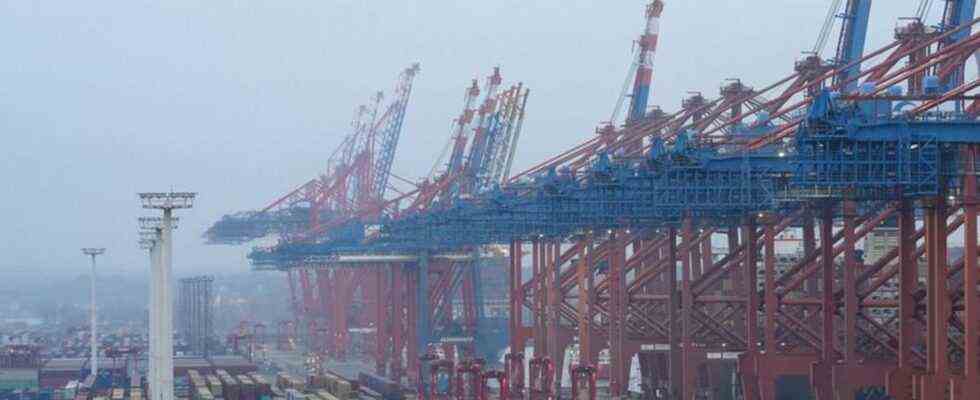Infrastructure
Sea ports are demanding a major expansion of the rail network
The container terminal in the port of Hamburg. Photo: Marcus Brandt / dpa
© dpa-infocom GmbH
Ports are the control centers in the global movement of goods – but they only work if there are good transport links to the hinterland. The German seaports fear growing problems on this subject.
The German seaports are demanding considerably larger investments from the new federal government in the expansion of the German rail network – in the interests of climate protection and the reliability of the currently extremely disturbed supply chains.
“If more traffic is to be on the rails, then we also need more rail,” said the President of the Central Association of German Seaport Companies (ZDS), Frank Dreeke, in Hamburg. Not only is there a need for better timing of freight traffic on the railways, new routes also have to be built.
Shifting freight transport from trucks to rail is an important component in the fight against climate change: the more goods that reach their destination on trains running on green electricity instead of diesel-powered trucks, the less greenhouse gas is produced. In addition, a functioning hinterland connection is an important prerequisite for ensuring that the goods reach the recipient as punctually as possible. In addition to reliability, the CO2 balance in the transport chain is likely to be an increasingly important criterion for customers in the logistics industry in the future.
The port industry receives encouragement from the Allianz pro Schiene association: “The seaports’ demand for higher investments in rail infrastructure is only too justified,” said its managing director, Dirk Flege, of the dpa. “For decades the rail network has shrunk – there was no other mode of transport, especially not with the road infrastructure.” According to calculations by Allianz pro Schiene, the rail network shrank by almost 15 percent between 1995 and 2019. At the same time, however, passenger traffic grew by 41 percent and freight traffic by as much as 83 percent. “The crowd on the rail network is getting bigger and bigger.”
Dreeke, head of the Bremen port and logistics service provider BLG, pointed out the competitive pressure that the port industry is under: “The international competitive environment between port locations and port operators is fiercely contested. The competition between ship-based and land-based logistics companies is also intensifying. “
Dreeke’s ZDS presidium colleague Sebastian Jürgens added: “We really have to build infrastructure, all over Germany. We have to be able to connect, construction is being carried out abroad. ” Otherwise the German ports, which are already under international competitive pressure, could face competitive disadvantages. The head of the Hamburg port group HHLA, Angela Titzrath, said: “In Hamburg in particular, we are Europe’s largest freight yard, but that’s not enough if we want to get even more goods on the rails.”
Jürgens, who is the board member of the Lübecker Hafen-Gesellschaft, emphasized that a large part of the freight traffic to and from Germany runs via the ports on the North and Baltic Seas. “That means we can’t just stand on the sidelines in this discussion and hope that it will somehow work out.”
Jürgens is also worried about the German train schedule. This means the plan that by 2030, trains between the largest cities should run every half hour. The assumption of the port managers: The Germany clock could unilaterally benefit the passenger traffic.

